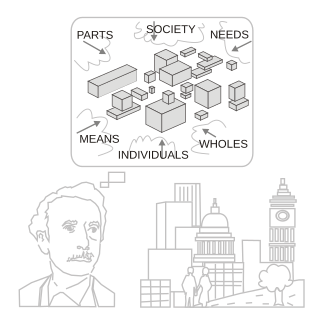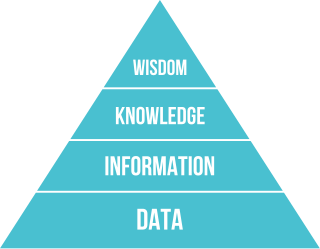Project management is the process of leading the work of a team to achieve goals and meet success criteria at a specified time. The primary challenge of project management is to achieve all of the project goals within the given constraints. This information is usually described in project documentation, created at the beginning of the development process. The primary constraints are scope, time, quality, and budget. The secondary challenge is to optimize the allocation of necessary inputs and apply them to meet pre-defined objectives.

Risk management is the identification, evaluation, and prioritization of risks followed by coordinated and economical application of resources to minimize, monitor, and control the probability or impact of unfortunate events or to maximize the realization of opportunities.

In psychology, decision-making is regarded as the cognitive process resulting in the selection of a belief or a course of action among several possible alternative options, it could be either rational or irrational. Decision-making process is a reasoning process based on assumptions of values, preferences and beliefs of the decision-maker. Every decision-making process produces a final choice, which may or may not prompt action.
Business performance management is a set of performance management and analytic processes that enables the management of an organization's performance to achieve one or more pre-selected goals. Gartner retired the concept of "CPM" and reclassified it as "financial planning and analysis (FP&A)," and "financial close" to reflect two concepts: increased focus on planning and the emergence of a new category of solutions supporting the management of the financial close.
Information management (IM) concerns a cycle of organizational activity: the acquisition of information from one or more sources, the custodianship and the distribution of that information to those who need it, and its ultimate disposition through archiving or deletion.

A decision support system (DSS) is an information system that supports business or organizational decision-making activities. DSSs serve the management, operations and planning levels of an organization and help people make decisions about problems that may be rapidly changing and not easily specified in advance—i.e. unstructured and semi-structured decision problems. Decision support systems can be either fully computerized or human-powered, or a combination of both.
In software development, agile practices approach discovering requirements and developing solutions through the collaborative effort of self-organizing and cross-functional teams and their customer(s)/end user(s). It advocates adaptive planning, evolutionary development, early delivery, and continual improvement, and it encourages flexible responses to change.

Systems science is an interdisciplinary field that studies the nature of systems—from simple to complex—in nature, society, cognition, engineering, technology and science itself. To systems scientists, the world can be understood as a system of systems. The field aims to develop interdisciplinary foundations that are applicable in a variety of areas, such as psychology, biology, medicine, communication, business management, technology, computer science, engineering, and social sciences.
Information Technology Service Management (ITSM) is the activities that are performed by an organization to design, plan, deliver, operate and control information technology (IT) services offered to customers.
The National Archives of Australia is an Australian Government agency that collects, preserves and encourages access to important Australian Government records. It describes itself as the memory of the nation.
The Information Services Procurement Library (ISPL) is a best practice library for the management of Information Technology related acquisition processes. It helps both the customer and supplier organization to achieve the desired quality using the corresponded amount of time and money by providing methods and best practices for risk management, contract management, and planning. ISPL focuses on the relationship between the customer and supplier organization: It helps constructing the request for proposal, it helps constructing the contract and delivery plan according to the project situation and risks, and it helps monitoring the delivery phase. ISPL is a unique Information Technology method because where most other Information Technology methods and frameworks focus on development, ISPL focuses purely on the procurement of information services. The target audience for ISPL consists of procurement managers, acquisition managers, programme managers, contract managers, facilities managers, service level managers, and project managers in the IT area. Because of ISPL's focus on procurement it is very suitable to be used with ITIL and PRINCE2.

5S is a workplace organization method that uses a list of five Japanese words: seiri (整理), seiton (整頓), seisō (清掃), seiketsu (清潔), and shitsuke (躾). These have been translated as "Sort", "Set In order", "Shine", "Standardize" and "Sustain". The list describes how to organize a work space for efficiency and effectiveness by identifying and storing the items used, maintaining the area and items, and sustaining the new order. The decision-making process usually comes from a dialogue about standardization, which builds understanding among employees of how they should do the work.
A configuration management database (CMDB) is an ITIL database used by an organization to store information about hardware and software assets. It is useful to break down configuration items into logical layers. This database acts as a data warehouse for the organization and also stores information regarding the relationships among its assets. The CMDB provides a means of understanding the organization's critical assets and their relationships, such as information systems, upstream sources or dependencies of assets, and the downstream targets of assets.
Governance, risk management and compliance (GRC) is the term covering an organization's approach across these three practices: Governance, risk management, and compliance. The first scholarly research on GRC was published in 2007 where GRC was formally defined as "the integrated collection of capabilities that enable an organization to reliably achieve objectives, address uncertainty and act with integrity." The research referred to common "keep the company on track" activities conducted in departments such as internal audit, compliance, risk, legal, finance, IT, HR as well as the lines of business, executive suite and the board itself.

The DIKW pyramid, also known variously as the DIKW hierarchy, wisdom hierarchy, knowledge hierarchy, information hierarchy, and the data pyramid, refers loosely to a class of models for representing purported structural and/or functional relationships between data, information, knowledge, and wisdom. "Typically information is defined in terms of data, knowledge in terms of information, and wisdom in terms of knowledge".
Forest informatics is the combined science of Forestry and informatics, with a special emphasis on collection, management, and processing of data, information and knowledge, and the incorporation of informatic concepts and theories specific to enrich forest management and forest science; it has a similar relationship to library science and information science.
Information technology (IT) is the use of computers to store, retrieve, transmit, and manipulate data or information. IT is typically used within the context of business operations as opposed to personal or entertainment technologies. IT is considered to be a subset of information and communications technology (ICT). An information technology system is generally an information system, a communications system or, more specifically speaking, a computer system – including all hardware, software and peripheral equipment – operated by a limited group of users.
The MIT Center for Information Systems Research (CISR) is a research center at the MIT Sloan School of Management founded in 1974. MIT CISR's research focuses on the use of information technology and management in complex organizations. Its mission is to "develop concepts and frameworks to help executives address the IT-related challenges of leading increasingly dynamic, global, and information-intensive organizations."
Michael S. Scott Morton is a business theorist, and is the Jay W. Forrester Professor of Management (Emeritus) at MIT Sloan School of Management, known for his contributions to Strategic information systems and benchmarking e-learning.
Matthew David McGorry is an American actor and activist. He is best known for his roles as John Bennett in the Netflix comedy-drama series Orange Is the New Black and as Asher Millstone on ABC's How to Get Away with Murder.






